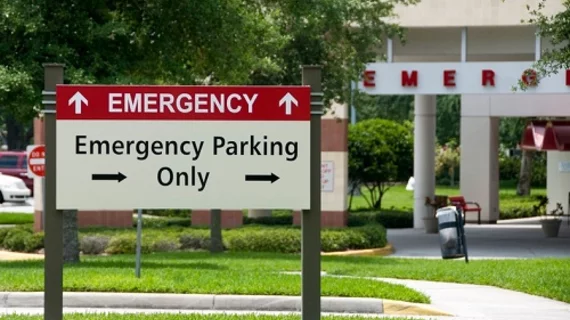Emergency trunk CT rises sharply even for minor, moderate trauma
Almost 10 of every 1,000 patients evaluated for trauma injuries in 2018 received CT scans of the chest, abdomen and pelvis to supply a diagnostic view of, in essence, the entire torso.
The count represents a significant jump from 2011, when the ratio was only 3.4 thoraco-abdominopelvic scans per 1,000 trauma patients.
What’s more, the increase affected patients presenting with injuries deemed minor (1.1 per 1,000 in 2011 to 4.6 in 2018) and moderate (6.4 to 16.4) as well as major (99.6 to 179.9).
The researchers behind the findings express concern over imaging overutilization.
Given the technical and professional costs of the exam itself—together with potential downstream imaging to explore incidental findings—they recommend the formulation of national strategies to “optimize order appropriateness, particularly for single-encounter thoraco-abdominopelvic CT for minor injuries.”
The study was conducted by radiology researchers at Emory University in Atlanta and published online Aug. 24 in the American Journal of Roentgenology [1].
Sizeable Sample, Range of Clinical Settings, Spread of Injury Sources
Ninad Salastekar, MBBS, MPH, and colleagues analyzed around 8.4 million trauma-related ED encounters involving privately insured patients in the IBM MarketScan Commercial Database.
While the escalation over the seven-year study period was most pronounced for thoraco-abdominopelvic CT, similar but more limited exams also grew substantially in popularity.
- Chest CTs per 1,000 trauma-related ED encounters rose from 4.9 in 2011 to 13.5 in 2018 (2.2 to 7.7 for minor injuries, 8.5 to 21.5 for moderate injuries and 117.8 to 200.1 for major injuries).
- Abdominopelvic CTs increased from 7.5 to 16.4 (4.8 to 12.2 for minor, 10.6 to 21.7 for moderate and 134.8 to 192.6 for major injuries).
Citing previous research showing rising rates of whole-body CT for injury-related ED visits, including for patients with less-than-severe injuries, Salastekar and co-authors suggest the present study confirms and expands the existing literature by its use of a large sample, wide range of clinical settings and spread of injury sources beyond vehicular accidents.
Cause and Effect? ‘Increasing Referrer Discomfort with Diagnostic Uncertainty’
In their discussion the authors take up the relatively higher increase in utilization for minor injuries. This rise may be “particularly impactful,” they write, not least because 68% of all the trauma-related ED encounters they reviewed were for minor injuries.
“The relatively greater growth for minor injuries may in part relate to the lower baseline utilization of CT for such injuries,” Salastekar and colleagues write. “We also speculate that increasing referring clinician discomfort with diagnostic uncertainty, which likely is greater in the context of minor injuries, may be a contributing factor.”
More:
Whole-body CT has been found to have advantages in the management of patients with severe trauma, including reduced ED turnaround times, which has led to increased utilization in such patients. This shift in practice patterns may have been applied more broadly than just in patients with severe injuries, contributing to the additional observation of increased utilization of single-encounter thoraco-abdominopelvic CT in patients with minor trauma.”
The authors call for outcomes-based research to investigate the pros and cons of imaging multiple body regions, as well as the whole body, to guide clinical care of patients with potential trauma injuries.

